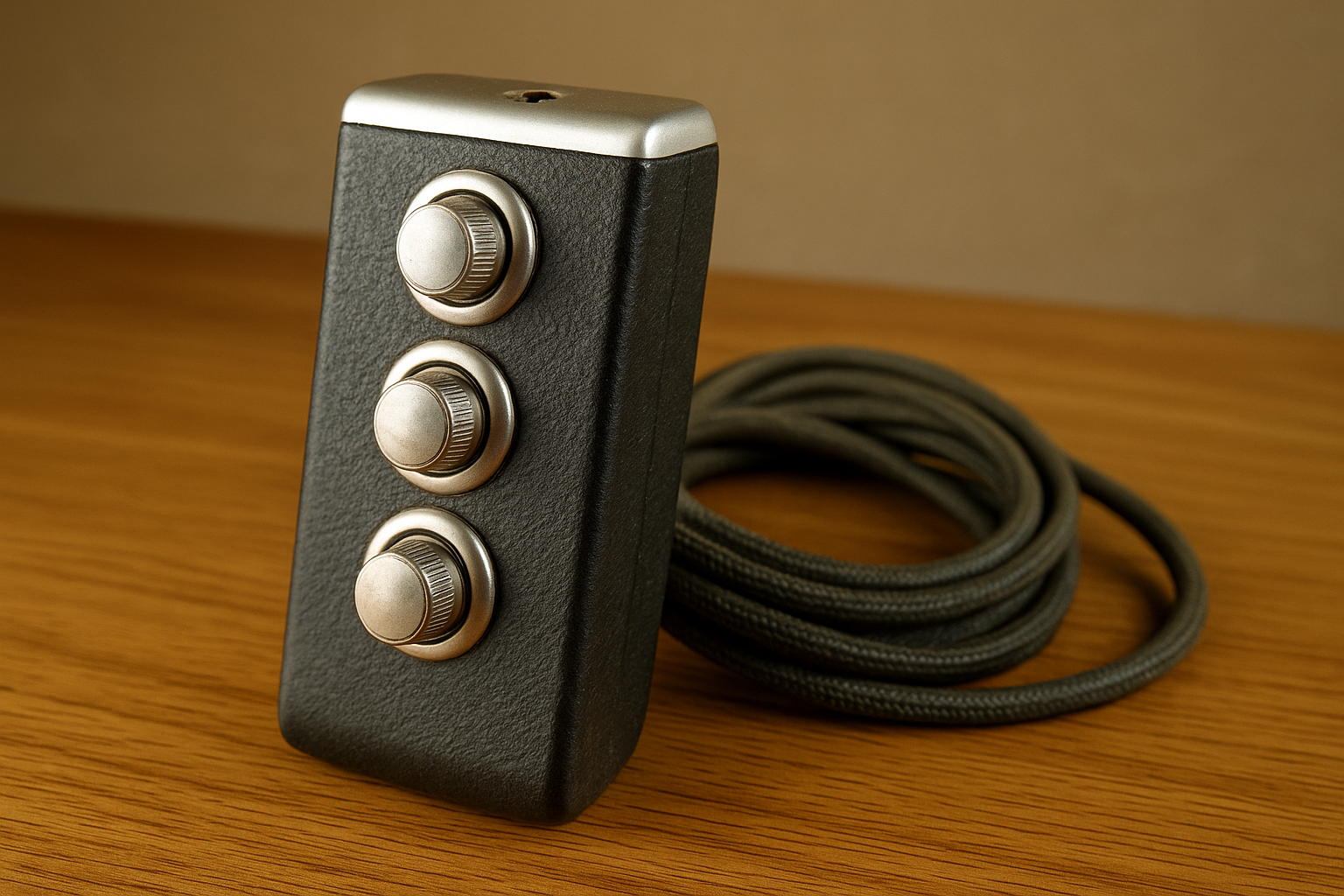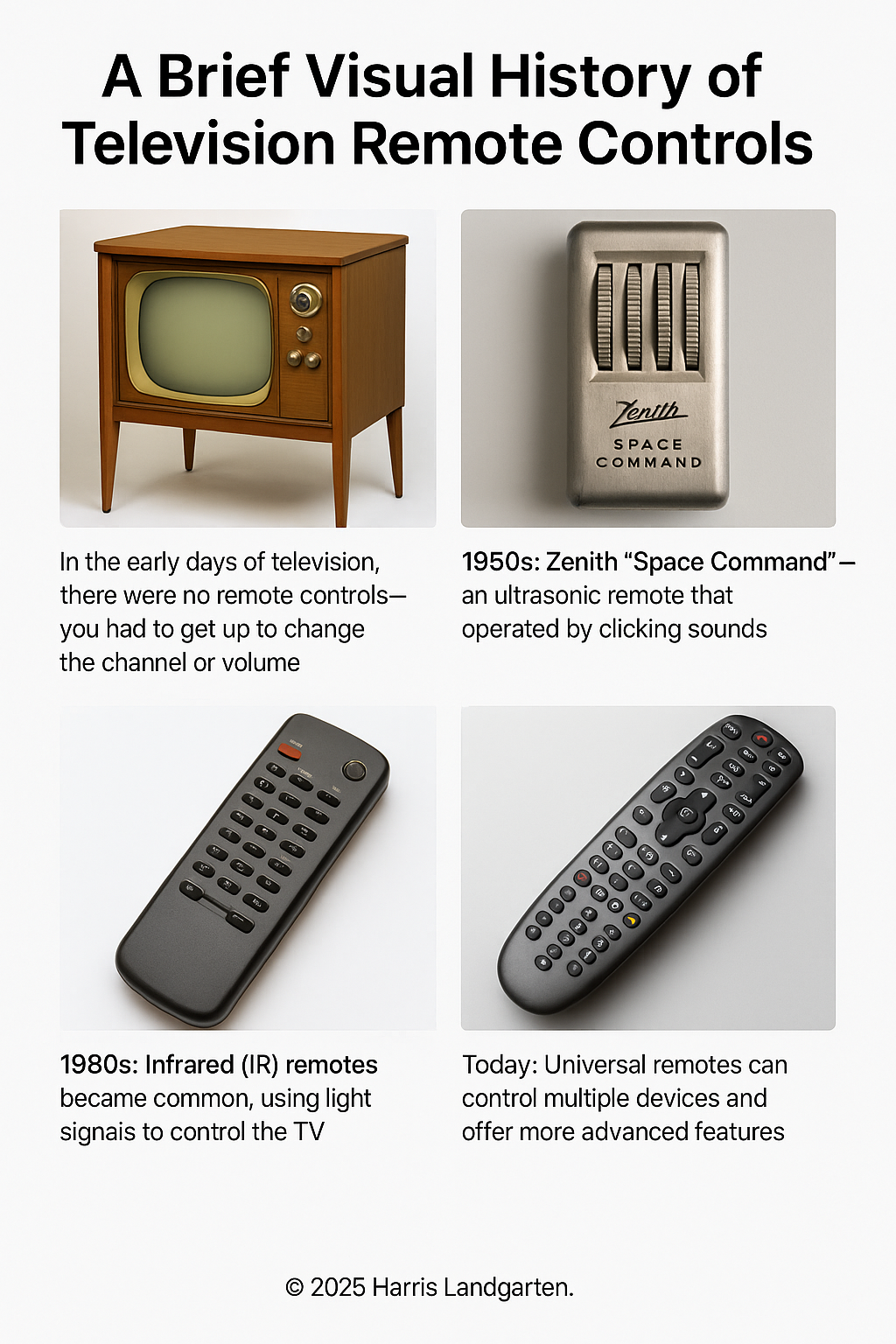Click, Clunk, and Clicker: A Short History of the TV Remote
Click, Clunk, and Clicker: A Short History of the TV Remote
In the earliest days of television, there was no remote control. Changing the channel meant standing up, walking to the set, and turning a big mechanical dial with a satisfying clunk. Volume? Same deal. If a sibling was closer to the TV, they were the “remote.”

By the mid-1950s, TV makers experimented with early remote controls — some wired, connected directly to the set. Some early remotes, like the one pictured, were wired before wireless options became viable. But Zenith pushed the concept forward with the first wireless remotes. The Flash-Matic used a beam of light aimed at photo sensors on the TV’s corners. It worked — until sunlight hit the sensors. Zenith quickly followed with the legendary Space Command, a true clicker. Inside were tiny aluminum rods; pressing a button struck a rod that rang at an ultrasonic frequency. Humans heard a click; the TV heard a command. (Dogs heard everything.)

In the late ’70s and ’80s, sets moved to infrared (IR) remotes—cheap, reliable, and simple, with the one tradeoff of line-of-sight. As homes added VCRs, cable boxes, and stereos, coffee tables filled with remotes. The answer was the universal remote: one handheld to rule them all, programmable for multiple devices (and capable of starting many family arguments).

Today’s remotes are minimalist: a few buttons, voice control, sometimes Bluetooth or RF so they don’t need line-of-sight. Many people skip remotes entirely, using phone apps or smart speakers to launch shows by voice. But for my generation, the journey from clunk to click to “Alexa, play…” tells a whole story about how convenience quietly re-engineers daily life.

